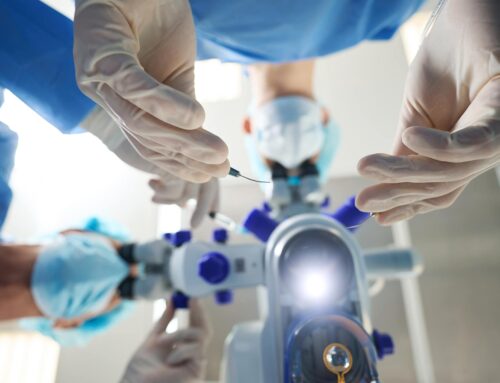Smile and LASIK are two technologies used by various eye surgeons to correct various eye abnormalities. This article will help you understand how these two technologies work and the relationship between smile and LASIK.
What is LASIK Eye Surgery?
LASIK (laser-assisted in situ keratomileusis) is a kind of eye surgery used to correct eyesight. The process is rapid, secure, productive, and yields result that last. Several different refractive defects can be corrected using LASIK surgery, including:
- Nearsightedness (myopia)
- Astigmatism (blurry vision caused by irregular cornea shape)
- Farsightedness (hyperopia)
A laser surgeon will either employ a conventional or bladeless approach during LASIK. A surgical blade is used in traditional LASIK to carve a flap in your cornea (the clear covering of your eye). With blade less LASIK, the surgical blade is replaced by a laser. Both techniques are regarded as being very secure and efficient.
What Is Small Incision Lenticule Extraction (SMILE)?
A more recent laser vision correction method, known as small incision lenticule extraction, received approval in 2016. It has been proven to be just as secure and successful as LASIK eye surgery. It is currently possible to treat myopia (nearsightedness) and myopic astigmatism with SMILE operations.
During SMILE laser eye surgery, your physician will employ a femtosecond laser to build a thin, contact lens-shaped layer beneath the cornea’s surface. The layer may be created in only thirty seconds. Afterward, the layer is extracted from your cornea through a 2 to 3 mm incision. Within a few days, the adjacent tissues will recover collectively, leading to improved vision.
Smile vs. Lasik eye surgery
Both LASIK and SMILE are very reliable and secure refractive procedures. Although they are very similar, the adverse effects and stages of the procedure differ. SMILE shares several benefits with LASIK and PRK (photorefractive keratectomy). Your eye surgeon can assist you in choosing if LASIK or SMILE is best for you based on your requirements and the kind of vision problems you have.
What Are the Similarities Between Smile and LASIK?
Numerous advantages of LASIK and SMILE are similar, including:
Reduced risk
Both treatments are quite secure and successful.
Low downtime
There is very little downtime for either surgery. Patients can resume their normal routines, including exercise, within a few days.
Fast and less painful
Patients with LASIK or SMILE can go home the same day as their treatments, as the process is fast and less painful.
Recovery time
In both Smile and LASIK, the patients have the opportunity to heal within one or two days.
What Are the Differences Between Smile and LASIK?
Both LASIK and SMILE produce 20/20 vision and are comparable vision correction techniques. The fundamental distinction between SMILE vs LASIK is that the corneal tissue is not removed with an excimer laser in SMILE. There are a few further distinctions between the two techniques, such as:
Cap versus flap
The biggest difference between the two procedures is how big an incision is. LASIK makes a 300+ degree circle flap incision, while SMILE produces a smaller 60-degree incision into a region below a tissue cap.
It’s still tissue excision, only in a different way. Instead of the laser shredding the tissue (as LASIK does), the laser accurately carves off a layer of tissue that must be removed. Then that little amount of tissue is drawn out via the cap incision, like drawing thread through a keyhole.
Stronger cornea
After SMILE, the corneal front is slightly more robust than after LASIK. SMILE contains more supporting anchoring strands.
There is also a reduced risk of injury. A LASIK flap normally heals without complications. However, this flap can migrate when significantly traumatized for months or even years afterward. Because the SMILE cap is secured all the way around, it will not shift or move.
Less risk of dry eye
The smaller incision with SMILE preserves more nerves, reducing the likelihood of dry eye.
Controlled procedure
The environmental room conditions can affect LASIK, particularly when high corrections are applied. SMILE, on the other hand, is unaffected by the temperature or humidity of the surrounding environment. When using SMILE, the precision achieved for higher corrections is equivalent to that achieved for lower corrections.
Conclusion
Are you still weighing the options between SMILE vs LASIK? Search our directory and consult a Best LASIK Surgeon for advice based on your needs.





